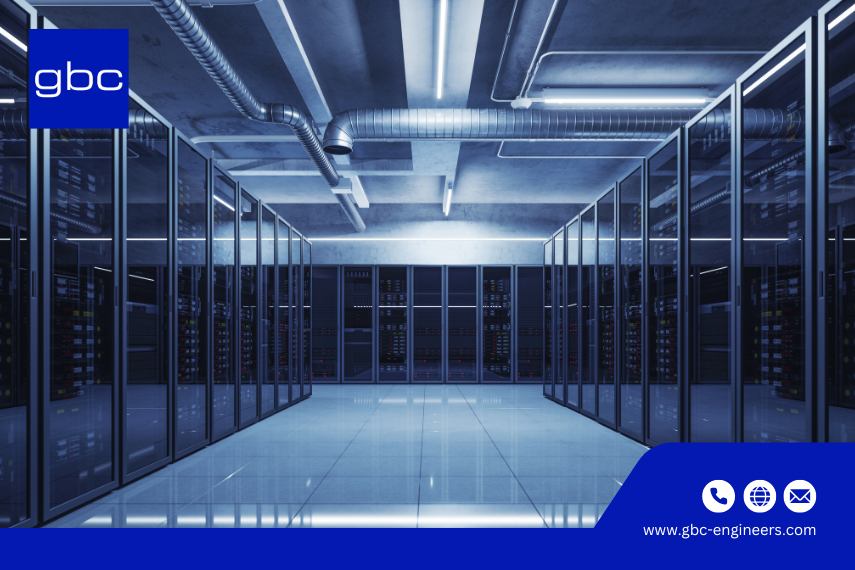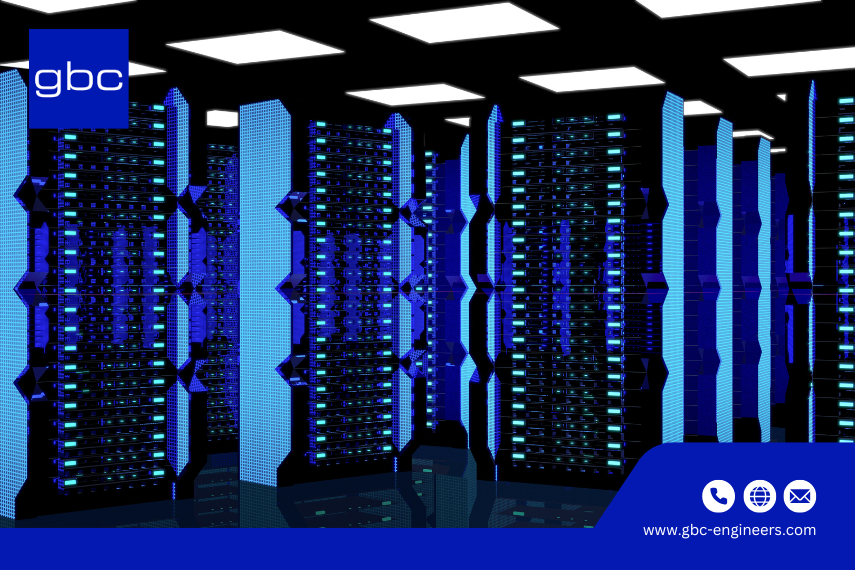In a digital-first world where uptime is critical, choosing the right data center infrastructure can be the difference between seamless operations and costly downtime. One of the most recognized and globally accepted standards to evaluate data center reliability and performance is the Uptime Institute Tier Classification System. Established in 2005, this system categorizes data centers into four tiers based on factors such as redundancy, uptime, fault tolerance, and operational sustainability.
In this article of gbc engineers, we'll explore what each data center tier means, why it matters, and how businesses can use this classification to select the best data center for their needs.
What Are Data Center Tiers?
Data center tiers are a standardized classification system developed by the Uptime Institute to describe the infrastructure performance, redundancy, and uptime capabilities of a data center. These tiers range from Tier I to Tier IV, with each level representing a step up in availability, fault tolerance, and operational complexity.
The tier system helps businesses evaluate which data center is most suitable for their needs—whether they're running a simple website or supporting critical financial systems that require 24/7 availability.
Read More: Best Data Center Monitoring System: How to Choose the Right One - gbc engineers
Purpose of Data Center Tiers
The primary goals of the data center tier system are to:
- Benchmark reliability and availability
- Help businesses assess risk and downtime tolerance
- Guide investment in infrastructure
- Ensure transparency in data center capabilities
- Each tier defines the expected uptime per year, the redundancy of components, and how the data center handles maintenance and failures.
Read More: Everything You Didn’t Know About Data Center Components - gbc engineers
Why Do Data Center Tiers Matter?
Choosing the right data center tier has a significant impact on your business operations. Here's why it matters:
1. Reliability and Uptime
Each tier guarantees a specific level of uptime. For example, a Tier I facility may experience almost 29 hours of downtime annually, while Tier IV reduces that to just 26 minutes. For companies requiring 24/7 operations, these differences are business-critical.
2. Redundancy and Resilience
Higher tiers offer more redundant systems to ensure service continuity even if one component fails. This includes power, cooling, and network systems—critical for maintaining operational integrity during failures or maintenance.
3. Business Continuity
Organizations dealing with sensitive data or requiring constant uptime (e.g., healthcare, finance, e-commerce) benefit greatly from Tier III and Tier IV data centers. These ensure that even during failures, business operations remain unaffected.
4. Cost vs. Risk Trade-Off
Higher tiers come at a higher price point due to the advanced infrastructure. However, the reduction in risk, increased uptime, and operational peace of mind often justify the cost for mission-critical applications.

Factors Influencing Data Center Tier Levels
Several factors determine a data center’s tier classification:
1. Infrastructure Redundancy
This includes backup generators, UPS systems, and redundant cooling systems. The more layers of redundancy, the higher the tier.
2. Power and Cooling Paths
Higher-tier data centers have multiple, independent paths for power and cooling distribution, ensuring operations continue even if one path fails.
3. Maintenance and Fault Tolerance
Tiers III and IV support live maintenance, which means you don’t have to power down for system checks or repairs.
4. Monitoring and Automation
Advanced monitoring systems that support predictive maintenance, environmental controls, and AI-based fault detection are common in higher-tier facilities.
5. Location and Environmental Risk
Physical location and susceptibility to natural disasters can influence the design and therefore the tier level required.
Read More: Top Strategies to Improve Data Center Asset Management in 2025 - gbc engineers
Tier I Data Center: Basic Infrastructure for Minimal IT Needs
A Tier I data center offers the most basic form of data center infrastructure. It provides non-redundant components for power and cooling, meaning there's only one path for power and cooling distribution, and no backup components in place.
This type of facility is not designed for high availability—any failure or routine maintenance can result in service disruption.
Key Characteristics of Tier I Data Centers:
- Single distribution path for power and cooling
- No redundancy in systems
- Uninterruptible Power Supply (UPS) for short-term power outages
- Dedicated cooling systems operating outside business hours
- Diesel generator for backup power during outages
Uptime & Downtime:
- 99.671% uptime per year
- Maximum of 28.8 hours of downtime annually
Suitable For:
- Startups and small businesses
- Non-critical operations
- Companies operating during business hours only
Advantages:
- Cost-effective solution
- Easy to set up and maintain
Limitations:
- No fault tolerance
- Vulnerable to outages during planned and unplanned events
Read More: Why Data Center Tiers Matter for Business Security and Continuity - gbc engineers
Tier II Data Center: Improved Reliability with Partial Redundancy
A Tier II data center builds on the Tier I standard by introducing redundant components, such as backup generators, UPS modules, and cooling systems. However, it still operates with a single path for power and cooling, which makes it less resilient to infrastructure failures.
Key Characteristics of Tier II Data Centers:
- Some redundancy for power and cooling (e.g., N+1 for generators or chillers)
- Single distribution path
- Backup power sources and cooling equipment
- Basic protection against power or equipment failure
Uptime & Downtime:
- 99.741% uptime per year
- No more than 22 hours of downtime annually
Suitable For:
- Small to mid-sized businesses (SMBs)
- Companies with moderate uptime needs
- Environments where short downtimes are acceptable
Advantages:
- Increased reliability over Tier I
- Relatively low cost with some protection
- Supports scheduled maintenance without total shutdown
Limitations:
- Still prone to unplanned downtime
- No concurrent maintainability

Tier III Data Center: High Availability with Concurrent Maintainability
A Tier III data center is designed for mission-critical operations that require continuous uptime. It features N+1 redundancy, meaning the system has enough capacity to handle the full load plus one additional component for failover.
Unlike Tiers I and II, Tier III facilities support concurrent maintainability, which allows for planned maintenance without downtime.
Key Characteristics of Tier III Data Centers:
- Multiple power and cooling distribution paths
- N+1 redundancy (e.g., 2 UPS units for every 1 required)
- Concurrent maintainability of all critical systems
- Designed to withstand planned maintenance without service impact
Uptime & Downtime:
- 99.982% uptime per year
- No more than 1.6 hours of downtime annually
Suitable For:
- Large enterprises
- Organizations with 24/7 operations
- Industries such as e-commerce, finance, healthcare, and cloud computing
Advantages:
- Highly reliable infrastructure
- Supports growth and scaling
- Reduces risk of downtime during maintenance
Limitations:
- Higher cost than Tier I and II
- Vulnerable to unplanned failures if backup systems are in use
Read More: What Are Micro Data Centers and Why Are They Crucial in 2025? - gbc engineers
Tier IV Data Center: Maximum Fault Tolerance and Uptime
A Tier IV data center is the most advanced and resilient classification. It offers complete fault tolerance, with 2N (or 2N+1) redundancy—meaning every system is duplicated, and an additional backup component is included to handle simultaneous failures.
With no single points of failure, Tier IV data centers can remain fully operational even during major infrastructure failures.
Key Characteristics of Tier IV Data Centers:
- 2N or 2N+1 fully redundant systems
- Multiple active distribution paths
- Fault-tolerant architecture
- Designed for continuous operations, even during disasters
Uptime & Downtime:
- 99.995% uptime per year
- Less than 26.3 minutes of downtime annually
Suitable For:
- Government agencies, multinational corporations, and financial institutions
- Businesses requiring maximum uptime and zero interruptions
- Mission-critical applications, such as military, emergency services, and healthcare networks
Advantages:
- Unmatched reliability and uptime
- Complete resilience to failures
- Ideal for disaster recovery and business continuity
Limitations:
- Very high operational and capital costs
- Complex to maintain and manage
Conclusion
The Data Center Tier Classification System provides a standardized framework for evaluating data center reliability, resilience, and capability. From Tier I to Tier IV, each level offers varying degrees of uptime, redundancy, and maintenance flexibility. Understanding these differences helps organizations align their infrastructure choices with business needs, regulatory demands, and growth objectives.
Whether you're a small business running a blog or a multinational bank managing millions of transactions per second, choosing the right data center tier is critical. Always validate tier certifications and consider your long-term scalability and risk mitigation strategies. In a world where downtime can cost thousands per minute, informed choices in data center selection are more important than ever.
At gbc engineers, we support clients in planning and designing mission-critical facilities that meet Tier I to Tier IV standards, ensuring long-term reliability, sustainability, and performance. Whether you're a startup exploring Tier I solutions or an enterprise preparing for Tier IV resilience, gbc engineers delivers tailored structural and engineering solutions to match your operational needs.